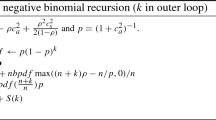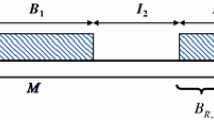Abstract
We give in this paper a detailed sample-average analysis of GI/G/1 queues with the preemptive-resume LIFO (last-in-first-out) queue discipline: we study the long-run “state” behavior of the system by averaging over arrival epochs, departure epochs, as well as time, and obtain relations that express the resulting averages in terms of basic characteristics within busy cycles. These relations, together with the fact that the preemptive-resume LIFO queue discipline is work-conserving, imply new representations for both “actual” and “virtual” delays in standard GI/G/1 queues with the FIFO (first-in-first-out) queue discipline. The arguments by which our results are obtained unveil the underlying structural “explanations” for many classical and somewhat mysterious results relating to queue lengths and/or delays in standard GI/G/1 queues, including the well-known Beneš's formula for the delay distribution in M/G/l. We also discuss how to extend our results to settings more general than GI/G/1.
Similar content being viewed by others
References
V.E. Beneš, On queues with Poisson arrivals, The Annals of Mathematical Statistics 28 (1957) 670–677.
S.L. Brumelle, On the relation between customer and time averages in queues, Journal of Applied Probability 8 (1971) 508–520.
J.W. Cohen, On up- and downcrossings, Journal of Applied Probability 14 (1977) 405–410.
R.B. Cooper,Introduction to Queueing Theory, 2nd ed. (North-Holland, Elsevier, New York, 1981).
R.B. Cooper and S.-C. Niu, Beneš's formula for M/G/1-FIFO “explained” by preemptive-resume LIFO, Journal of Applied Probability 23 (1986) 550–554.
D. Fakinos, The G/G/1 queueing system with a particular queue discipline, Journal of the Royal Statistical Society B 43 (1981) 190–196.
D. Fakinos, On the single-server queue with the preemptive-resume last-come-first-served queue discipline, Journal of Applied probability 23 (1986) 243–248.
D. Fakinos, The single-server queue with service depending on queue size and with the preemptive-resume last-come-first-served queue discipline, Journal of Applied Probability 24 (1987) 758–767.
W. Feller,An Introduction to Probability Theory and Its Applications, Vol. II (Wiley, New York, 1971).
S. Ghahramani and R.W. Wolff, Finite moment conditions for GI/G/1 busy periods, preprint (1986).
P.W. Glynn and W. Whitt, Extensions of the queueing relationsL=λW andH=λG, preprint (1986).
F.P. Kelly, The departure process from a queueing system, Math. Proc. Camb. Phil. Soc. 80 (1976) 283–285.
J.M. Harrison and A.J. Lemoine, On the virtual and actual waiting time distributions of a GI/G/1 queue, Journal of Applied Probability 13 (1976) 833–836.
D.P. Heyman and S. Stidham, Jr, The relation between customer and time averages in queues, Operations Research 28 (1980) 983–994.
L. Kleinrock,Queueing Systems, Vol. I: Theory (Wiley, New York, 1975).
S.-C. Niu and R.B. Cooper, Duality and other results for M/G/1 and GI/M/1 queues, via a new ballot theorem, Mathematics of Operations Research, to appear (1987).
S.-C. Niu, Inequalities between arrival averages and time averages in stochastic processes arising from queueing theory, Operations Research 32 (1984) 785–795.
S.M. Ross,Stochastic Processes (Wiley, New York, 1983).
H.L. Royden,Real Analysis, 2nd ed. (Macmillan, New York, 1972).
J.G. Shanthikumar and U. Sumita, On G/G/1 queues with LIFO-P service discipline, Journal of the Operations Research Society of Japan 29 (1986) 220–231.
S. Stidham, Jr, A last word onL=λW, Operations Research 22 (1974) 417–421.
L. Takács, The limiting distribution of the virtual waiting time and the queue size for a single-server queue with recurrent input and general service times, Sankhya A 25 (1963) 91–100.
R.W. Wolff, Poisson arrivals see time averages, Operations Research 30 (1982) 223–231.
G. Yamazaki, The GI/G/1 queue with last-come-first-served, Ann. Inst. Statis. Math. A 34 (1982) 599–604.
G. Yamazaki, Invariance relations of GI/G/1 queueing systems with preemptive-resume lastcome-first-served queue discipline, Journal of the Operations Research Society of Japan 27 (1984) 338–346.
Author information
Authors and Affiliations
Rights and permissions
About this article
Cite this article
Niu, SC. Representing workloads in GI/G/1 queues through the preemptive-resume LIFO queue discipline. Queueing Syst 3, 157–178 (1988). https://doi.org/10.1007/BF01189047
Received:
Revised:
Issue Date:
DOI: https://doi.org/10.1007/BF01189047




